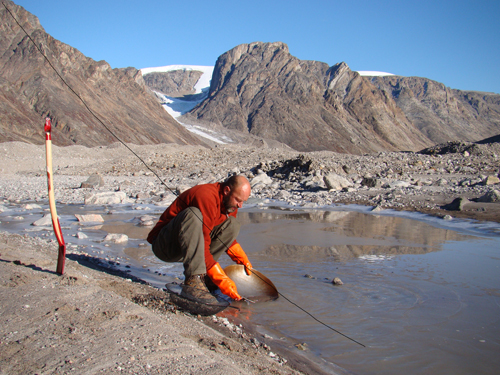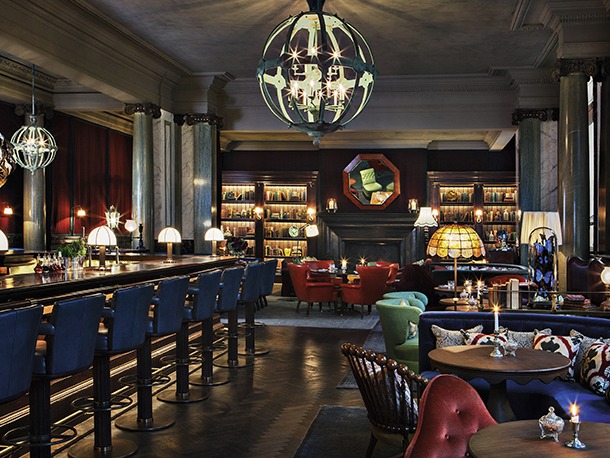
Based purely on its geological structure alone, Greenland has what the vast majority of industry experts consider to be highly favourable conditions for the development of its own mining sector. Indeed its geographical location between Europe and the United States, combined with the high prices attainable for most of the raw materials that are present there, partially offset its absence of infrastructure and of sources of energy, and the harsh climatic conditions of the country.
Established by a team of Czech geologists and businessmen in 2011, the Czech Geological Research Group (CGRG) was created specifically to obtain exploration licences in Greenland as a junior exploration company, using funding obtained from private sources.
“The founding of the company,” states Managing Director, Petr Dvorský, “was preceded by approximately two years of careful exploration of the potential of this business to succeed. Upon establishing ourselves in 2011 we applied for our first licences in Greenland, which were subsequently granted, before commencing with our first field studies that same year.”
Today CGRG is tirelessly moving forward with its analysis of Greenland’s geological environment, with its team of geologists working intensively through a number of strategic tasks. These tasks include the re-processing of legacy Aeromag data from the west and south of Greenland that the company purchased using the latest processing techniques, as well as working alongside the Geological Survey of Denmark and Greenland (GEUS) in preparation for the 2014 season.
“In addition to our existing Kap Perry, Traill and Milne Land licences,” explains Jan Štembera, Vice President of Exploration, “we also applied for two additional licences, Ameralik on the west coast and Igaliku in the south of the country, in early January. Moving forward we aim to begin conducting basic geological surveys on these two new licences during 2014.”
In addition to the work it plans to carry out on Ameralik and Igaliku, the company has also submitted a request to extend its existing Milne Land licence. It is here that CGRG has already uncovered a series of promising geological anomalies that suggest a massive amount of future potential for new rare earth discoveries.
“I think we managed to choose the locations of our licences very successfully,” Dvorský continues, “particularly in terms of their high potential for bearing the commodities that are in our viewfinder and that coincide in many respects with the strategic needs of the majority of European consumers. In this respect we find ourselves continuing with the gradual sophisticated expansion of our purposefully established licences, which we see huge potential in.”
Despite the obvious advances the company has made in a relatively short space of time, CGRG has not been immune from the many challenges and risks that Greenland possesses. One of the biggest risks faced by any company looking to operate in what is essentially uncharted land is the underestimating of the need to have all the necessary logistical provisions in place. Whereas in populated countries a missing part or spare can typically be obtained in a matter of hours or day, in Greenland this becomes weeks. It is for this reason that CGRG works closely with partners like Polog, the Danish logistics company which is a recognised specialist when it comes to logistics in the high Arctic.
Of course then there are the unique climate conditions that Greenland is known for. “In many of the areas in which we are working, particularly north-west Greenland,” Dvorský says, “it is of huge importance that we ensure the accurate timing of work, whilst at the same time remaining very flexible, because at the end of the day, no matter how perfect the plan, the weather can completely disrupt it. In order to try and combat this we rely on cooperation with Polog and local people, and it is this cooperation that we find the most valuable asset in the fight against inclement climate. We are presenting an elaborate concept and people knowledgeable about the local conditions are very effectively helping us to realise this concept.”
In CGRG’s home country of the Czech Republic there is a well held understanding that all geological activities should be carried out in the most environmentally conscious fashion. CGRG has transported this philosophy over to Greenland where its geologists are adhering to all the environmental standards and regulations related to geological exploration in Greenland.
In Dvorský’s eyes this is yet another example of the invaluable efforts made by CGRG’s employees throughout the business. “Our greatest asset is undoubtedly the quality of our staff, who, as leading experts in their fields, establish the basis for our success. It is our steadfast belief that in this line of work nothing can be left to chance or circumvented. We are pleased with the fact that Czech geologists like ours have a worldwide reputation as being the best and we can rely on them completely.”
With the additions of the Ameralik and Igaliku CGRG will hold a total of five properties, a large number for any junior mining company. However, as Štembera goes on to highlight, the potential that these assets possess far outweigh the challenges that arise from having so many assets at one time. “If you look at the map you will see that around Ameralik there is literally nothing for hundreds of kilometres along the coast. That is green pasture, an unexplored area and we have high hopes for that area, as we do for Igaliku. At both we need to do the basic geological sampling, conduct basic field work and analyse samples and that is the plan for next year.”
CGRG believes that it has a valid concept and sufficiently high-quality sources of information to be able to gradually build up a network of exploitable deposits of its raw materials of interest. “We are putting a lot of effort into the success of our programme, starting with the continuous work of our geologists and the obtaining of new data, and concluding by providing support for the development of new technologies applicable to geological surveying,” Dvorský concludes. “We believe that Greenland has the potential to provide our European industry with a certain degree of independence from the often very distant and uncertain suppliers and we are glad that we, as a Czech company, represent a part of this positive process.”
Written by Will Daynes, research by Richard Halfhide
DOWNLOAD
 CGRG-Greenland-SPR-Bro-s.pdf
CGRG-Greenland-SPR-Bro-s.pdf













